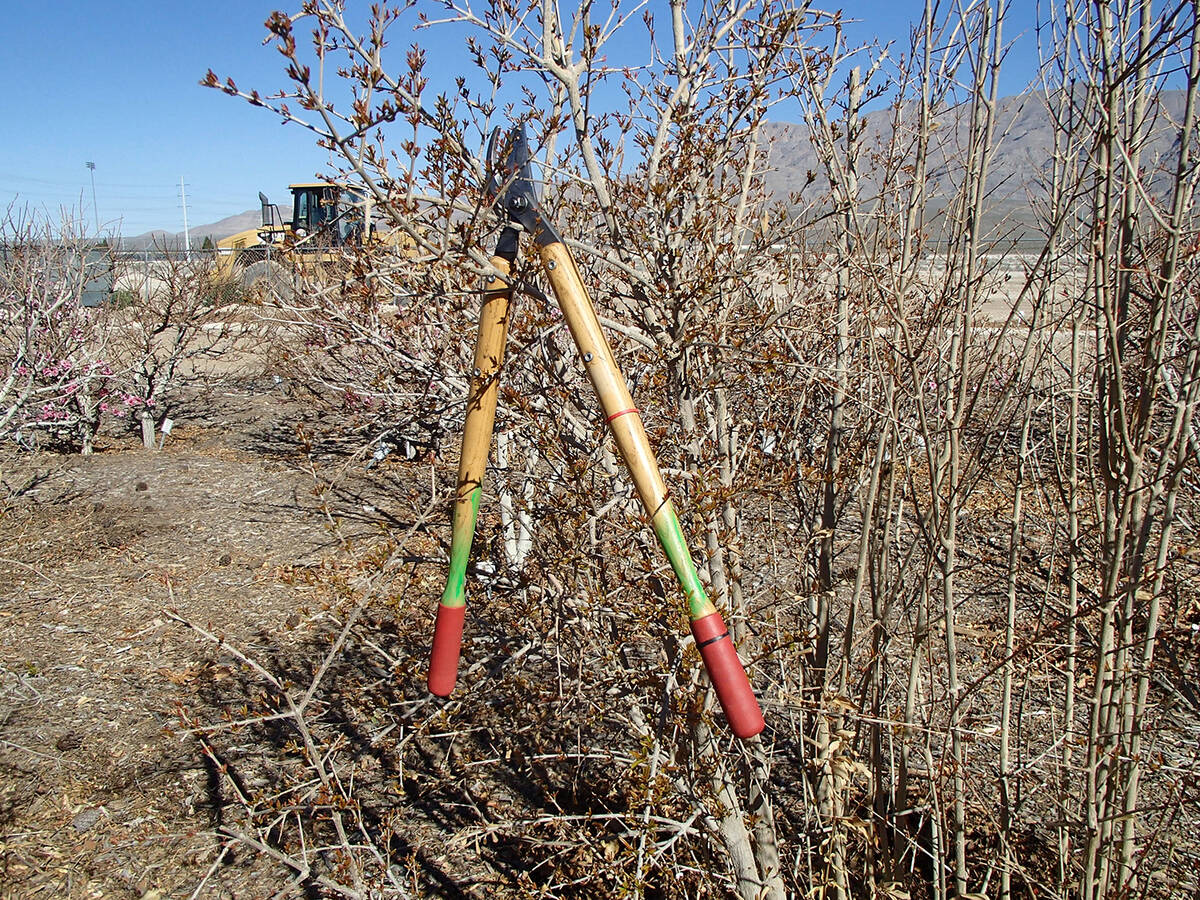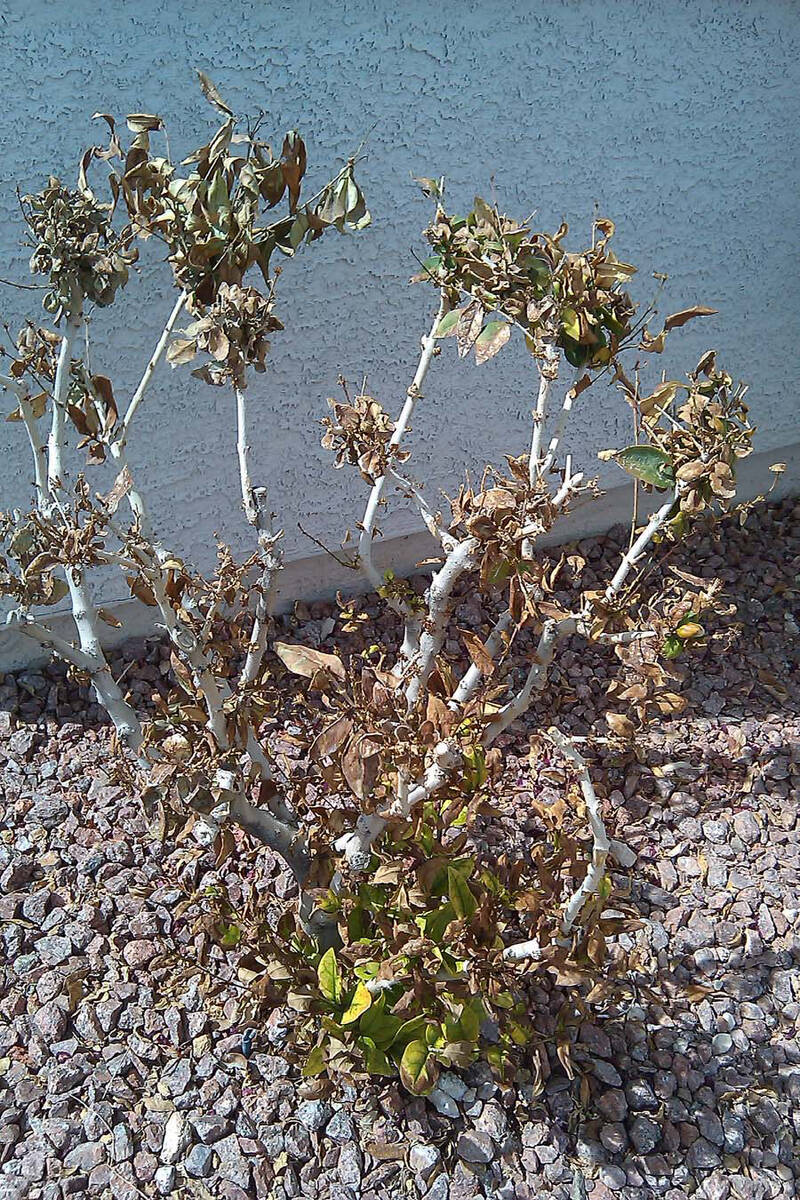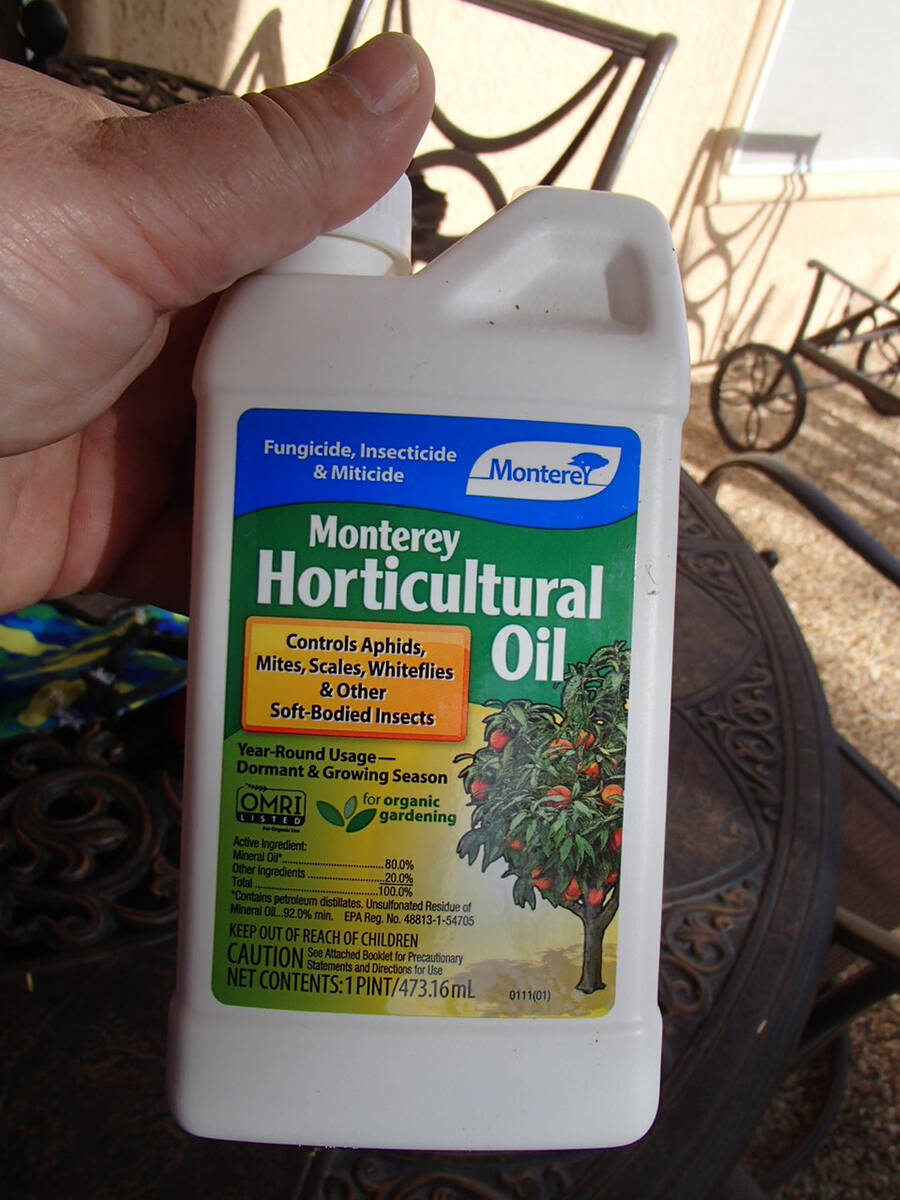Pruning, fertilizing, planting can be done in fall
A quiz I wrote a few weeks ago was so popular that I thought I would quiz you with more questions, but this time centered around what to do in the fall.
Are the cooler fall months the best time to plant trees and shrubs?
It depends. Divide available trees and shrubs into two groups: those that are winter hardy and those that are winter tender. The best time to plant to winter-hardy trees and shrubs is during the fall, from around the end of September through mid-November. The warmer air and soil temperatures of the fall and spring gives these plants two “springs” to get established before the heat of summer.
The worst time to plant winter-tender trees and shrubs is in the fall because of the potential for freezing weather during December, January and February.
This recommendation depends on our winter and landscape. Sometimes we have winters that don’t freeze at all. Sometimes we have winters that barely dip below freezing. Occasionally we get a hard freeze with winter temperatures well below freezing, into the teens and even below.
I recommend trees and shrubs that are important design features of your landscape be able to withstand temperatures to 20 F, 12 degrees below freezing. Chances are that established trees and shrubs will recover from rare freezing events.
What is the best fertilizer for roses in the fall?
The worst months for roses growing in the hot desert are those 3 ½ hot summer months. Our extreme heat is brutal for landscape roses and they need a chance to recover as soon as air temperatures start cooling. The early fall planting months are also the best time to fertilize roses with the same fertilizer used in the spring: high phosphorus and potassium with lower amounts of nitrogen.
The directions on the fertilizer bag recommend the maximum amount of fertilizer to apply. If your roses have dark green leaves, lots of growth and with flower buds ready to “pop,” then reduce the recommended amount to apply in half. Some rosarians like to use Epsom salts (for the magnesium content) as part of their fertilizer mix.
Roses love compost and wood chips, not rock. Roses perform best surrounded by decomposing wood chips with compost mixed in the soil.
Recognize there are two types of compost available, including “rich” composts that are chock-full of fertilizer. Rich compost is typically recycled animal or human waste. A 1 cubic foot bag of compost will treat four standard roses.
Rich compost doesn’t need a fertilizer application. Other types of compost lower in nutrient content probably will. Apply all fertilizers and rich compost no closer than 12 inches from established plants.
Spring is the only time to “deep fertilize” trees and shrubs.
Not necessarily. Inexpensive venturi-type fertilizer injectors such as EZ Flow are becoming more popular and is probably the best way to fertilize landscape winter-hardy plants. The old-fashioned method of applying granular fertilizers periodically, depending on what you’re growing, is probably the most cost-effective method. Both methods work.
If you are using a fertilizer injector, then there is no reason for deep fertilizing trees and large shrubs. But if you are using the old-fashioned method of applying granular fertilizers by hand, then deep fertilizing landscape trees and shrubs is a method that might or might not interest you.
Deep fertilization of trees and shrubs was first devised for mixed landscapes where trees and shrubs were growing in lawns. This method avoided killing the lawn in spots like dog urine.
If your trees are in mulch and not in a lawn, then dropping a handful of fertilizer where the drip emitters are located is good enough and the fertilizer doesn’t need to be placed deeply. Water from the drip emitters helps move the fertilizer to where the roots are actively growing.
If you were to buy one insecticide that would treat as many pests as possible in a landscape, which would you buy?
Probably dormant or horticultural oil. This is an oil applied in mid-winter, after the leaves have fallen from deciduous plants. It suffocates many insects and prevents them from being a problem months later. It is a preventive application so when it is used the results are usually not noticed.
A second insecticide I would use is just plain old soap and water mixed in a spray bottle. Neither are technically organic, by definition, but they work.
The dormant or horticultural oil is sprayed on the entire plant, top to bottom, after leaves have dropped and it has been pruned. Spray on a warm winter day with no wind. These types of oils are used for controlling outbreaks of soft-bodied insects like aphids, scale insects, mites and whiteflies. It does not control that crazy looking leaf footed plant bug or grubs feeding on roots in the soil. But, like many “organic” sprays, it is an indiscriminate killer; both good guys are bad guys are killed.
I had to include the second insecticide, soap and water mixtures, because it is so effective. It also does not discriminate good insects from bad insects; it kills anything you spray. I was taught years ago that it kills by “drowning” the insect. But the waxy outer layer of the insect is also damaged.
One tablespoon of liquid soap mixed with a gallon of water is a very toxic combination when damaging insects are directly sprayed. Like many “natural” sprays, there is nothing left, no residual, after spraying. Frequent repeat sprays are needed when insect problems persist.
Is now a good time to seed damaged areas of my lawn?
From now until about the end of October or possibly mid-November (if it stays warm) and if the lawn is a “cool season” fescue type, it is a good time to seed damaged areas. But if your lawn is the lower water-use hybrid bermudagrass, Buffalograss, zoysia or any warm-season grass, then you missed the time for fixing the dead spots. If yours is a warm-season lawn, then seeding, sprigging or plugging for establishment by the fall should have been done by the end of July or possibly even early August.
However, you are not too late to fix the dead spots. You still have time to overseed your lawn with a perennial ryegrass (perennial ryegrass and not annual) for the winter months and then fix your warm-season lawn in about April or early May. Perennial rye is much prettier and mows better than annual ryegrass, but both will work. Annual ryegrass is for the price-conscious and perennial ryegrass is for those whose focus is on beauty rather than price.
When can I start to prune?
Light pruning can be done any time of year, even in the middle of summer. Buckle your hand pruners to your pants or belt every time you go outside in the garden. Heavy pruning should be done only when the plant stops growing. For the most part, plants have stopped growing by midfall, but the leaves have not yet fallen.
What do I mean by light pruning? Light pruning is just cutting or pruning small-diameter stems or branches. Pruning with a hand pruner can be done anytime; just not excessively. Don’t open the tree up for sun damage.
Heavy pruning is when something larger than a hand pruner, like a lopper or saw, is used for cutting. That should only be done during the cooler winter months and best done after leaf drop.
You can prune woody plants before leaf drop if the plant has stopped growing. Pruning “invigorates” a tree and causes it to grow if done too early. After leaf drop is when you can see the (limb structure) architecture of the tree and make better and faster decisions. During October and November is the time of year the plant has stopped growing but has not dropped its leaves. It’s safe to start pruning now if you can see what you’re doing.
Bob Morris is a horticulture expert and professor emeritus of the University of Nevada, Las Vegas. Visit his blog at xtremehorticulture.blogspot.com. Send questions to Extremehort@aol.com.











